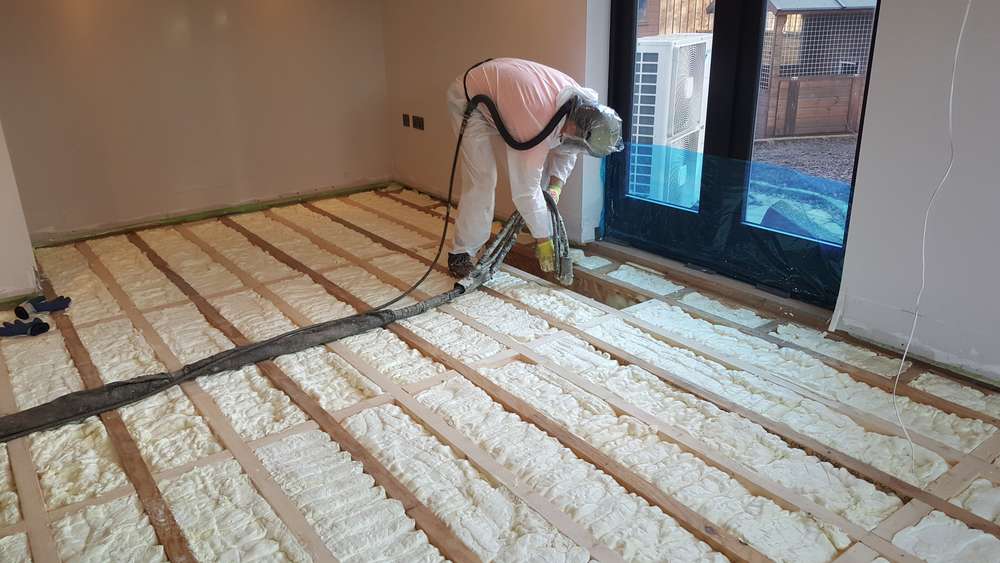Attic Spray Foam Insulation Kells
3 Bed Semi Attic Insulation Kells

Attic Insulation Kells
Spray foam works in many different conditions. Spray foam is useful in roofs, windows, attics, underfloor heating systems, interior and exterior walls, as well as roofs.
Spray foam insulation will keep your home warm during winter and cool in summer. It allows moisture-laden air, such as from the basement, to escape thanks to its structure and cell structure.
Benefits of Spray Foam Insulation for your home
Other uses include: commercial and industrial buildings; agricultural farms houses; sheds; shipping containers; vessels; and the refrigeration industry.
It creates an airtight barrier around your home, keeping out rain and cold winds. This is a major disadvantage over other insulation products currently on the market, as it allows heat to escape from your home.


Cost Price Of Spray Foam Insulation
Spray foam insulation can be regarded as the most efficient insulation material. Spray foam insulation has a higher U.Value than conventional insulating materials, such as fiberglass, rock wool, cellulose, and polystyrene board.
Spray foam insulation is also a good sound barrier. It reduces outside noise by up to 50%. This is particularly beneficial if the home or business is located near an airport or densely populated city.
Insulate Your Kells Property Properly
It is used to eliminate sound traveling from one room into another, or across floors in the interior walls. It is especially useful for bathroom walls where noises from toilets and showers can cause nuisances.
It is easy to use and does not cause any disruptions to your daily activities.
An Irish traditional home can be insulation in one day.
Encasing the pipes and insulation reduces noise coming from under-floor or in-wall piping.

If you plan on using the loft/attic as storage space, you should lay boards above the joists. You won’t get thick insulation if the insulation isn’t thick enough if the insulation is only applied between the joists.
It is much more effective than fibreglass, rock wool or polystyrene panels when used inside walls, roofs, floors and attics. Its dense composition and the application process creates an entirely airtight environment. It stops sound infiltration from the outside environment such as traffic or pedestrianised streets.
It also blocks sounds from a structure’s walls from reaching other floors, including the floors below. Spray foam insulation would dramatically reduce the noises that are often generated in a structure.
Spray foam insulation is flexible but densely packed with millions if minute air bubbles. This will absorb vibrations from the floor as well as the sound waves. Spray foam insulation reduces the transmission and propagation of airborne noises by sealing every crack and crevice.
Spray foam insulation is also effective in dampening, if no longer completely eliminating, any sounds that might be emanating from a floor like water running through pipes. It surrounds pipes securely, preventing them rattling. It also prevents hot water from flowing through the pipes, which can cause the wooded beams to creak, crackle and expand.
It also keeps heat from escaping to upper floors, which causes lower floors to become colder, which in turn makes them require more heat to keep warm. The upper floors become too hot.
It is possible to insulate lofts if they are accessible and have no damp or condensation issues.
In an uninsulated house, 25% of heat escapes through the roof. Insulating your flat roof, attic, or loft can help reduce heat loss and decrease your heating costs.
If you have access to your loft joists and it is easy to use, mineral wool insulation rolls can be used. The insulation is first laid between the horizontal beams, or joists, that make up the loft floor. Next, another layer is laid at right angles so the insulation can be covered to the desired depth.
You can raise the floor to get sufficient insulation. You can install timber battens on the floor joists. Or, you can use purpose-built legs made of plastic that fit on the leg and support the floor. You should leave enough air space between insulation layers and boards to prevent condensation.
When you attach the boards to the board, make sure not to squash the mineral wool. This will lower its insulation.
Insulation blocks heat escape from living spaces. Therefore, loft insulation will cool your loft space, which can lead to condensation or damp problems. You may need to increase ventilation if you install loft insulation yourself.
You can also insulate the loft by fitting insulation between the rafters. These are the sloping timbers that form the roof. You have the option of using rigid insulation boards carefully cut to size or foam insulation sprayed between your rafters.
Some companies may offer to repair your roof with foam insulation. This is something that we do not recommend. You must ensure that your roof is in good condition before you apply insulation.
If you plan to use your loft for heating, you’ll need to make a room in the roof.
If you’re planning on using your loft as a living room, or it’s being used already, make sure all walls and ceilings that divide a heated and unheated space have insulation.
For your home to remain fresh, dry, healthy and clean, it needs air flow. A professional installer will ensure that your house does not have any obstructions or seals. Do not cover grilles, airbricks, or vents if you are DIY-insulating.
A professional can install blown insulation in a loft that is difficult to reach. They will use special equipment to blow the appropriate insulation material into any space. They can use mineral wool fibres or treated cellulose or polyurethane.
Flat roof insulation can save you as much on heating costs than loft insulation. The size of your flat roof will affect the savings.
You can probably insulate your loft yourself if it is accessible and does not have damp problems. If there are damp issues or more complex insulation needs, a professional should be hired.
Cold draughts could be caused by the cooler loft air. This can be prevented by installing an insulated hatch in your loft and putting strips of draught-exclusion material around the hatch edges.
Insulating your ground floor can help you keep your home warm and reduce your carbon footprint.
Insulating a loft in your home is one of most cost-effective ways to reduce heating bills. Even if you already have insulation, it is crucial to have the best amount in order to make it effective.
Loft floor rolls are the traditional choice. These roll out along the loft floor. They are quicker to lay than insulated flooring boards. They can be purchased as either loose (blanket), or encapsulated (blanket), and can be used to make both top and base layers. They can be boarded with stilts to make a raised platform for storage.
These are not recommended items or tips that were included in the list of tools and materials. You should ensure that you’ve read everything before you begin to insulate your loft.
Even though insulation is often present in homes, some may not be effective. It could be that the insulation has been compressed with storage boards or not being topped up for a while. Sometimes, loft floors can be as small as 25mm in depth for older properties.
It doesn’t have to be removed from your loft floor insulation. To reach the recommended level, simply add one or more layers to it. We will discuss how much to recommend in the next section.
Your loft floor’s spacings will dictate the width of your roll. This is because the insulation rolls between these joists. We recommend that you choose one that is as close as possible to your joist spacing. This will minimize the need to trim excess.
The insulation’s thermal resistance. If you only want to lay loft rolls, there is an alternative method that measures the insulation thickness. You can find more information in the section “How to calculate loft floor insulation thickness”
Areas We Service


Parkhill, Dublin
01 5255297

